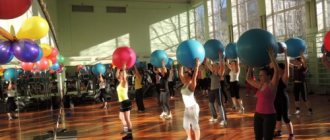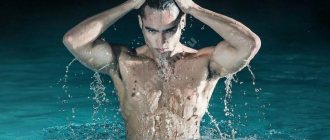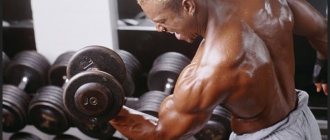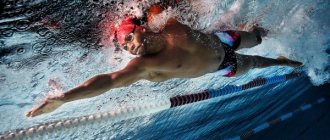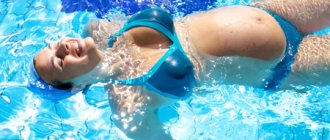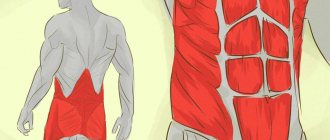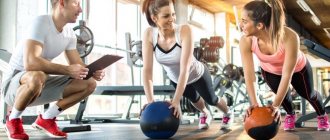Swimming is a fat-burning workout
When swimming in a pool or open water, a lot of muscles are used, and it is realistic to maintain the load at a low intensity for a long time. This is how the process of burning fat as energy starts. In the pool you can maintain your heart rate in the aerobic zone for a long time, while fatigue sets in much later than during the same, say, running workout.
But all this will work only with sufficiently active and continuous exercise. It will be beneficial if you approach swimming lessons from the point of view of competitive swimming. Swimming costs 45 minutes, or better yet an hour, without long stops, using the crawl or fast breaststroke technique.
How to choose the right suit
The wrong approach to choosing a suit, as well as its complete absence, can have a detrimental effect on human health. In order to most accurately approach the choice of such an item as a women's swimsuit , it is important to understand in what environment the training will take place.
How to choose the right suit
There is a so-called wet suit, which has its own characteristics in structure and manufacture. It is interesting that the temperature of its fabric and constituent elements, on average, depending on the environment, can be within 20 degrees with a mark above zero.
However, it allows water to pass through it. This occurs in places where the suit does not fit tightly to the body, particularly in the area of fasteners, collar or cuffs. It warms a person with the temperature of his own body, from which the water heats up, and gives the opposite effect.
- Its practicality and versatility is that it is easy to work with at any depth and in any water. In addition, often the size, namely the thickness, is from 1 mm, it is thin and elastic, comfortable to wear, does not interfere with exercise and does not cause allergic reactions.
On a note! If you are planning to go into big sports, then you should know that the women's swimming team will definitely not use suits for spearfishing and surfing.
A dry swimsuit can protect the female body in cold water conditions. It is this type of water and oceanic climate that is suitable for using a dry wetsuit. The suits got their name from the fact that water is completely unable to come into contact with the body.
In addition, costumes are distinguished according to such criteria as:
- Short;
- With legs closed;
- Set - three;
- Bikini.
The material from which the special swimming uniform is made also plays an important role. Today there are several technologies used to produce such a product:
- Chemical basis is a durable and relatively inexpensive method;
- Leather, although this is a fairly relative indicator, is rather neoprene;
- A classic material with a titanium element that allows you to keep warm and keep your shape well in the waves.
In addition, experts say that along with a wetsuit it is also worth buying a women's swimming cap , it will always come in handy and will make you feel dry and confident in yourself so that you can conquer the peaks again.
Swimming burns a lot of calories
How many calories swimming in the pool burns depends on your body type, weight, and workout intensity. A person weighing about 70 kg will spend an average of 400 calories per hour of work, even a little more. Moreover, this is a low or average pace. A more intense workout in the pool will require about 715 calories per hour.
Compared to other low-intensity workout options, swimming wins - the elliptical machine can burn up to 365 calories, walking burns about 315 calories per hour, and yoga burns about 180 calories.
Read on topic: How many calories are burned when running?
Swimming uses all muscles
Swimming uses all the muscles of the body. True, each technique puts a greater or lesser load on certain muscle groups, but still, the whole body works.
During breaststroke, the athlete primarily uses his legs - the muscles of the thighs, gluteal and calf muscles. The butterfly stroke requires significant arm and core strength. The crawl is a universal style in terms of involving muscle work. But each of these styles requires the work of the muscles of the arms, back, body, and legs in one or another cycle of movement and to maintain the body at the surface of the water.
Swimming develops the cardiovascular system
While the muscles are working, the internal organs are working no less intensively. The cardiovascular system also works, and swimming makes the heart stronger. Swimming exercises develop the body's aerobic performance, improving heart rate and increasing its performance.
There are studies that prove the risk of fatal diseases is reduced by half. There is also scientific evidence that swimming lowers blood pressure and helps control spikes in blood sugar. Swimming protects against the occurrence and even helps with diseases such as vegetative-vascular dystonia, atherosclerotic vascular damage, and hypertension.
Protection and safety while sailing
When the human body remains in water for a long time, the body begins to develop reflexes, in particular, the skin tightens and the pressure and body temperature decrease. This can negatively affect a woman's health.
Protection and safety while sailing
Especially if a girl regularly plays sports without a special suit, then she risks becoming a victim of diseases such as:
- Allergy;
- Hyperhidrosis;
- Atmospheric pressure surges and diseases of the vascular system.
Any suit that is used for protection purposes can be an excellent means of safety against influences such as water pressure on the human body.
Swimming trains your lungs
The benefits of swimming for the respiratory system have been scientifically and practically proven. Powerful inhalations and exhalations and breath holding develop the diaphragm, chest muscles, and increase the volume of the lungs.
Thanks to this, swimming is suitable for asthmatics - holding your breath while swimming, as in any sport, helps develop the respiratory system and improves the condition of people with asthma. True, there are other studies that say inhaling chlorine is harmful - so people with asthma should first talk to their doctor.
The benefits of swimming
One of the popular sports today is swimming; millions of people around the world enthusiastically visit swimming pools, natural bodies of water, swim, and master different styles. The article will focus on swimming - the main points associated with the sport: the impact on health, types and styles, equipment, attracting children and swimming for the purpose of losing weight.
In swimming, like in any sport, there are “undercurrents”. But the benefits of exercise are undeniable; experts have coined the term that physical activity is the most “harmonious.” Swimming has a beneficial effect on physical, intellectual and mental well-being. There are many advantages:
- Swimming is a type of training that involves almost all organs and vital systems of the body.
- Water sports help preserve natural beauty and youth, form a beautiful figure, make the skin elastic and smooth, and help keep weight under control.
- This sport can be practiced practically from the first months of life until old age.
- You can master the style, enjoy physical movements, exercise in the pool, on the lake, river, sea.
- The sport helps strengthen the body, prevents many diseases, reduces the level of stress in the body, and helps cope with stressful situations.
How does swimming affect human systems and organs: the respiratory muscles are involved, they are trained, their tone increases, ventilation of the lungs increases, and the functioning of the respiratory system improves.
Swimming has a positive effect on the cardiovascular system, the heart muscles are trained, and heart power increases (with regular exercise). Experts note that during exercise the composition of the blood changes and the blood cells return to normal.
It is known about the influence of water sports on musculoskeletal mass, firstly, all muscle groups are worked out, and secondly, the figure becomes proportional and harmonious. More powerful loads are experienced than during exercises “on land”. Water supports the body, eliminating excessive stress.
Experts talk about the benefits of water and exercise for the nervous system, it is being trained, the processes of inhibition and excitation are balanced, the system is in good shape, but is not overloaded. Classes help relieve nervous tension, relieve depression, normalize sleep, and have a positive effect on memory and attention.
Swimming - an alternative recovery workout
Pool swimming is one of the best recovery workout options for runners, cyclists, and any endurance sport. In the pool it is possible to conduct a full-fledged aerobic workout at a calm pace. If an athlete is suffering from sore throat or wants to take a break from his sport, then the pool is a lifesaver. Swimming in the pool can be an excellent replacement for running, skiing or cycling.
Read on the topic: How to replace running: 13 alternative options
Breaststroke
The second most popular type of swimming technique in the pool is breaststroke, or it is also called “frog”. Indeed, if you look at a swimmer from above, his actions with his arms and legs resemble the movements of a frog. It is the most popular swimming style among amateur athletes. If desired, you can swim with it without plunging your face into the water, however, to achieve the best speed performance, it is advisable to follow the recommended technique exactly. By the way, breaststroke is the slowest sports style.
Execution technique
First, let's look at the hand movements - try to do them in the air, you will immediately understand how to move in the water. The forearms are brought together so that the elbows rest on the chest. Now stretch your arms forward, and at the moment of straightening, turn your palms with the backs of your hands facing each other, and, as it were, push the water to the sides. The arms are spread out until they form a straight line. Now bring your forearms together again, etc.
The legs are moved apart in a horizontal plane, the knees are pulled towards the stomach, ideally the heels should collide with each other. The limbs move synchronously - first the arms open, causing a forward jerk, then, while they are collected under water, the legs open, the forward movement is picked up and continues. At the moment when the hands make a stroke, the swimmer briefly immerses his face in the water and exhales. During the recovery phase, when the hands gather at the chest, inhale.
This style requires perfect unity of movements, and is not too demanding on the respiratory system. If you wish, you can avoid immersing your face in the water at all, but in this case you will swim even slower and get more tired.
Advantages
- Allows you to swim at a calm, relaxed pace;
- The best type of long distance swimming;
- Does not stimulate too intense pulse or heart rate surges;
- Does not require strong physical training.
Flaws
- Slowest swimming style;
- Not the most spectacular in terms of beauty of movements.
Swimming improves sleep
There is an interesting study by Norwegian scientists that examined the relationship between aerobic exercise and insomnia. More than half of the study participants noticed that after regular exercise in the pool, their sleep became better.
Of course, several sports were studied - running, elliptical trainers, cycling, swimming, and all turned out to be good in the fight against insomnia. But swimming may be a more accessible and less traumatic sport for older people, who often have trouble sleeping.
Swimming is suitable for pregnant women
Swimming in the pool during pregnancy reduces the risk of premature birth and the birth of children with developmental defects. A team of Danish scientists came to this conclusion as a result of a study. At the same time, scientists have not identified the negative impact of chlorinated pool water on a pregnant woman and her child.
Swimming can be a great and safe way to stay active during pregnancy. But an individual approach is still important - it is better for an expectant mother to go swimming only after consulting a doctor.
What muscle groups are involved when swimming?
Swimming requires endurance and strength. It is due to these qualities that the body moves forward and is held on the water in one cycle of perfect movements. The human body in the pool is deprived of support, and only with the synchronous work of the limbs can one stabilize the position in the water or move. Let's look at which muscles work most actively when swimming.
In total, in the human body there are several main muscle groups, classified as large ones, which are involved in physical activity, including swimming.
These are the following muscles:
- pectoralis major;
- bi- and triceps brachialis;
- deltoid;
- trapezoidal;
- latissimus dorsalis;
- oblique abdominal muscle;
- rectus abdominis;
- quadriceps on naked;
- biceps muscle on the legs;
- gluteus maximus;
- calf muscle;
- flexors of the foot and ankle.
Each of the swimming styles that exist at the moment affects these muscle groups and as a result, swimming front crawl, breaststroke and butterfly you have a chance to keep your whole body in good shape.
Working muscles when swimming front crawl
Swimming front crawl is the fastest swimming style, and accordingly, the load is also maximum. The main muscles working when swimming front crawl are the muscles of the shoulder girdle. But the muscles of the legs and core are also involved.
The intensity of movement with the arms is much higher than the legs, so the muscle tissue is worked more thoroughly.
The muscles involved in the shoulder girdle are:
- two-headed;
- triceps;
- chest;
- widest;
- triceps
Also, when swimming the front crawl, the leg muscles are actively active:
- quadriceps;
- two-headed;
- gastrocnemius.
When swimming front crawl, the swimmer's torso also participates in the movement. The following muscles work:
- serratus anterior;
- oblique abdominal muscles;
- external abdominal muscle;
- rectus abdominis muscle;
- chest;
- large and small diamond-shaped;
- round;
- trapezoidal;
- latissimus dorsalis.
Working muscles when swimming breaststroke
When swimming breaststroke, the following muscle groups are involved:
- back;
- trapezoid;
- widest;
- diamond-shaped
The work of the muscles when swimming in the breaststroke style is aimed at holding the body on the water with the hands, and the legs hit the water with pushes. Therefore, when swimming breaststroke, the following muscle groups in the legs work:
- femoral adductors;
- anterior tibial;
- gluteal;
- two- and four-headed;
- calf.
The triceps and biceps and the finger flexor muscles work the most in the arms.
Working muscles when swimming butterfly
The style with a beautiful name translates as butterfly style. This is the most difficult method of swimming, requiring maximum energy consumption due to the complexity of coordination. All muscle groups are involved, since the swimmer's movements occur symmetrically with the left and right parts of the body.
The muscle groups that develop when swimming in the butterfly style are as follows:
- shoulder (tri- and two-headed);
- dorsal;
- chest;
- abdominal muscles;
- calf;
- femoral quadriceps.
Working muscles when swimming backstroke
The back crawl is not as fast as the front crawl, but it works the largest number of back muscles:
- deltoid;
- two-headed;
- triceps;
- lats;
- calf.
The level position of the body on the back works its flexors. To stabilize the body on the surface of the water, the gluteal muscles and the back of the thigh are involved.
Actively working in hands:
- rotator cuff;
- serratus anterior;
- teres major muscle.
Considering what muscles swimming in the pool develops, one can identify a pattern - all professional swimmers have their own external specifics. So, during the crawl on the stomach, the muscle corset evenly develops, during the breaststroke - the muscles of the legs, calf and thighs; during the crawl on the back, weaker muscle development is observed. The muscles of a butterfly swimmer are highly developed in the legs and shoulder girdle.
Swimming is good for joints and spine
Water is eight times denser than air, and in it the human body weighs less. During swimming there is no impact load and no compression - therefore the overall load on the joints and ligaments is reduced.
A huge advantage of the pool is that tangible and effective physical activity is maintained. Swimming in the pool helps strengthen the spine and helps correct posture, because the load on the vertebrae, skeleton and bones is reduced, and at the same time, the back and core muscles work, evenly strengthening.
The benefits of swimming in the pool for the female body
The benefit of swimming in the pool for women is that it is a good means of preventing and treating women's diseases and problems.
The benefits of swimming in the pool for women are undeniable, because it has a beneficial effect on the entire body.
Regular swimming lessons:
- Prevents the occurrence of excess weight, which can provoke diseases of the cardiovascular system, gastrointestinal tract and respiratory system.
- Allows you to get rid of cellulite and make the skin elastic.
- Promotes the formation of correct posture and makes joints flexible.
- Helps lift your mood and relieve stress. Water is an excellent remedy for insomnia.
Swimming is suitable for the recovery period after injuries
Swimming is an alternative option for rehabilitation training and exercise during the period of returning to sports after injuries or even during treatment. For example, for runners suffering from a common problem - inflammation of the periosteum - swimming is ideal: the shock load is completely removed, and the development of the cardiovascular system and endurance does not stop.
Swimming in the pool is also suitable for athletes with dislocations or bruises - injuries that do not immobilize, but do not allow them to engage in usual sports.
Anastasia Fesikova (Zueva)
The Russian woman is an Olympic silver medalist in the 200-meter backstroke. Anastasia also has victories at the World and European Championships. Our athlete is the European record holder in the 200-meter backstroke.
I decided to show some photos from that wonderful photo shoot, which unfortunately never appeared on the screen...
Posted by Anastasia Fesikova(Zueva) (@nuska90) May 23, 2013 at 12:53 PDT
It was a wonderful photo shoot!!
Posted by Anastasia Fesikova(Zueva) (@nuska90) Jul 3, 2013 at 1:00 PDT
Swimming is suitable for people with serious health problems
Recreational swimming is suitable for people with more serious health problems, such as arthritis. Another study found that people with this condition reported a decrease in body pain after regular swimming.
Swimming is suitable for people with disabilities and limited mobility. Of course, such health-improving swimming should be used after talking with a doctor and under the supervision of a trainer, but, in general, the health benefits of swimming are obvious.
Let's swim and lose weight!
Overweight women are looking for different ways to return to their beautiful original parameters. Swimming for weight loss can be an important part of an overall comprehensive program. A one-time visit to the pool will not give the desired results; you need to swim regularly.
At first, the weight may increase. It’s not scary, adipose tissue disappears, muscle tissue appears, it weighs more than fat, so the “wrong numbers” may appear on the scales. Continuing regular swimming lessons, your weight will decrease, your figure will improve, become more sculpted and toned, and a decrease in cellulite will also become noticeable.
Swimming has a beneficial effect on the body and vital systems. You don’t have to strive to set records, swim for fun with your family, children and best friends!
vote
Article Rating
Useful article? Rate it and add it to your bookmarks!
Swimming relieves stress
In Taiwan, they conducted their own study - they surveyed 101 swimmers before and after the swim. 44 participants said they felt depressed and stressed due to the fast pace of life. After the swim, their number was reduced to 8 people.
Of course, there is still not enough purely scientific research in the field of studying this issue, but even without it, the statement that swimming relieves stress is difficult to dispute. Scientists believe that swimming is a potentially powerful way to quickly relieve stress.
